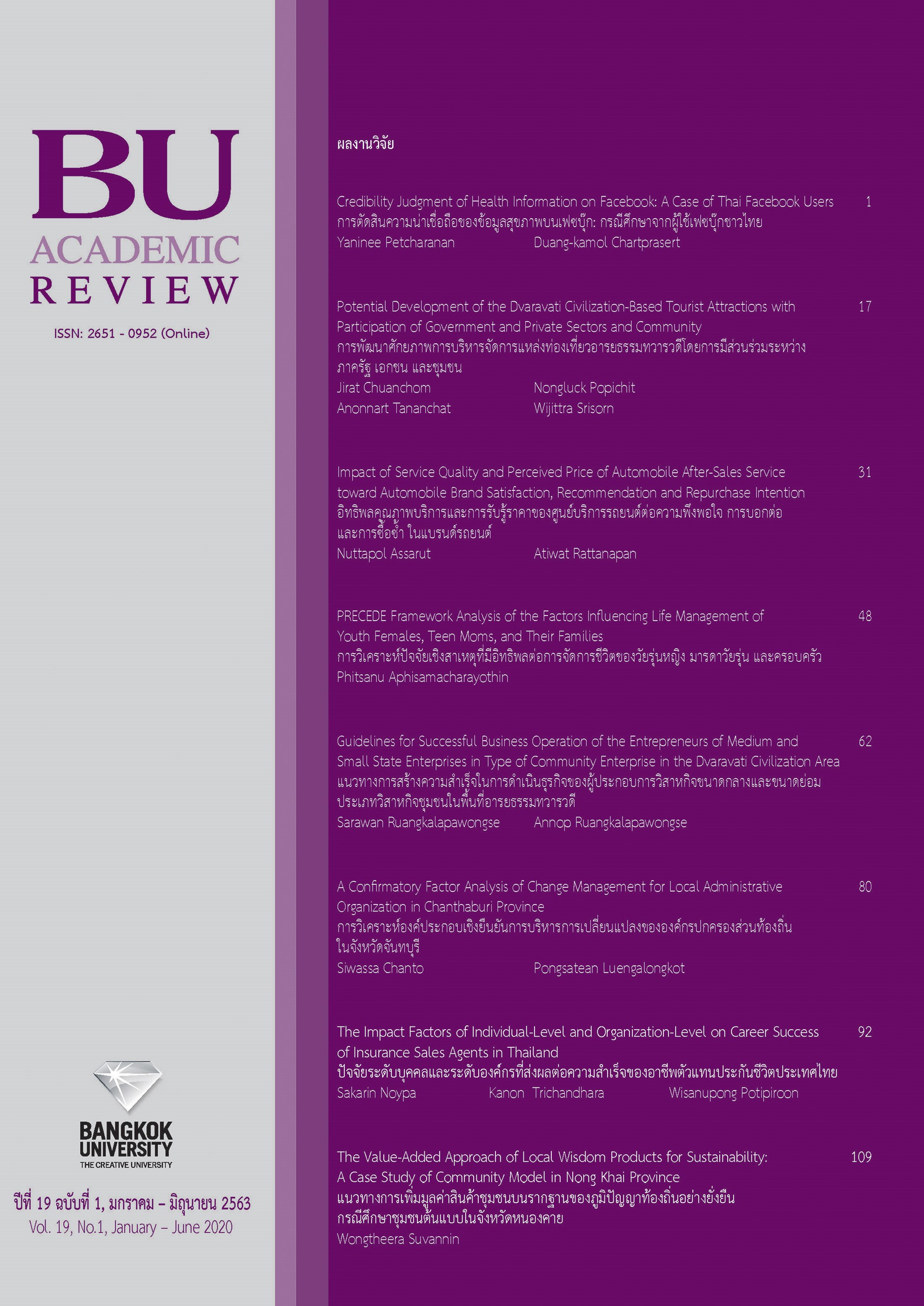Demand for Thai Tourism and Economic Condition
Main Article Content
Abstract
This paper aims to estimate the demand for Thai tourism by top 15 countries of foreign tourist arrival in Thailand. By using the panel data during 2010 to 2018, panel unit root test, pooled regression and panel cointegration test, the results indicated that the behavior of foreign tourists are not difference. The changes in economic environment did not affect their demand for Thai tourism. The economic slowdown, the higher price, or appreciation in Thai Baht cannot slowdown their demand. Past behavior, and social and political instability have been induced the declining in demand for Thai tourism with highly statistical significance. Then, the recommendation is to promote tourism continuously.
Article Details
The manuscript submitted for publication must be the original version, submitted only to this particular journal with no prior acceptance for publication elsewhere in other academic journals. The manuscript must also not violate the copyright issue by means of plagiarism.
References
Chaivichayachat, B. (2015). Impacts of changing in macroeconomic factors on foreign tourism
revenue and sectoral output in Thailand. International Journal of Business and Management Study, 2, 65–66.
Chaivichayachat, B. (2018). Tourism revenue in major tourism cluster in Thailand: Determinants
and responses of macroeconomic variable. International Journal of Civil Engineering and
Technology, 10(3), 1046-1055.
Chumni, M. (2001). Bǣpčhamlō̜ng ʻuppasong khō̜ng kānthō̜ngthīeo: patčhai thī mī phon tō̜ rāidai
čhāk nakthō̜ngthīeo tāng chāt khō̜ng prathēt Thai [Tourism demand model: Determinants of Thailand’s international tourist receipts] (Master’s thesis, Chulalongkorn University).
Coshall, J. (2000). Spectral analysis of international tourism flows. Annals of Tourism Research,
(3), 577-589.
Eilat, Y., & Einav, L. (2003). Determinants of international tourism: A three-dimensional panel data
analysis. Applied Economics, 36(12), 1315-1327.
Hausman, J. (1978). Specification tests in econometrics. Econometrica, 46(6), 1251-1271.
International Monetary Fund. (2018). World economic outlook. Retrieved June 15, 2019, from
https://www.imf.org/external/datamapper/datasets/WEO.
Kao, A. (1999). Spurious regression and residual-based tests for cointegration in panel data.
Journal of Econometrics, 90(1), 1-44.
Kester, J. G. C. (2003). International tourism in Africa. Tourism Economics, 9(2), 203–221.
Levin, A., Lin, C. F., & Chu, C. S. J. (2002). Unit root tests in panel data: Asymptotic and finite-sample
properties. Journal of Econometrics, 108(1), 1-24.
Lim, C. (1997). Review of international tourism demand models. Annals of Tourism Research,
(4), 835-849.
Ministry of Tourism & Sport. (2018). Sathiti nakthō̜ngthīeo [Tourist statistics]. Retrieved June 15,
, from https://www.mots.go.th/more_news_new.php?cid=411.
Nordstrom, J. (2002). Dynamic and stochastic structures in tourism demand modeling (Umea
Economic Studies No. 596). Sweden: Umea University.
Preedatham, K., Vivatvanit, V., & Suksonghong, K. (2018). Modeling the demand for inbound tourism to
Thailand: Panel data approach. Advanced in Economics, Business and Management Research, 52, 236-241.
Song, H. Y., Witt, S. F., & Li, G. (2003). Modelling and forecasting the demand for Thai tourism.
Tourism Economics, 9(4), 363-387.
Sookmark, S. (2011). An analysis of international tourism demand in Thailand (Doctoral Dissertation,
National Institute of Development Administration).
The World Tourism Organization (UNWTO). (2018). Tourism statistics. Retrieved June 15, 2019,
from https://www.unwto.org/statistics.
Tourism Authority of Thailand. (2018). Tourism economic reviews. Retrieved June 15, 2019, from https://www.tourismthailand.org/.
Untong, A., & Kaosa-ard, M. (2011). Kān wikhro̜ ʻuppasongkān thō̜ngthīeo Thai nai raya yāo [An analysis
of Thailand's long-run tourism demand]. Thammasat Economic Journal, 29(2), 1-34.


